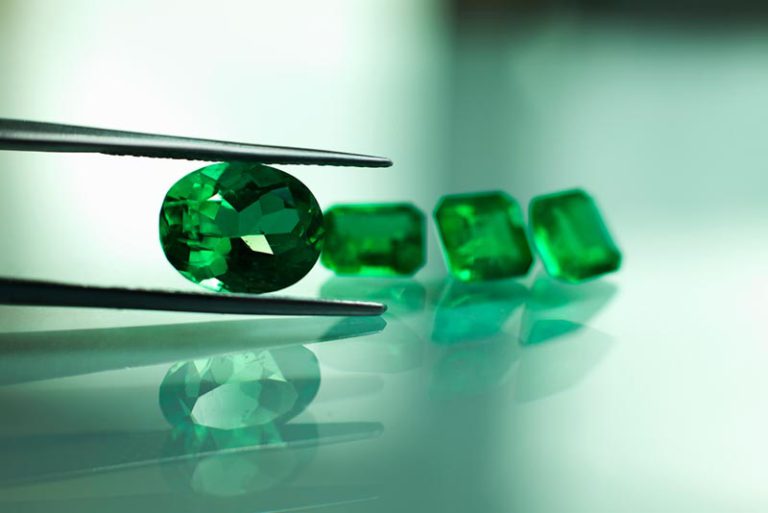The queen of precious stones – emerald – is going to be the topic of our talk today.
This green variety of beryl contains small amounts of chromium and in some cases vanadium; these are the elements ‘responsible’ for its characteristic green color. Its specific weight usually ranges between 2.65 and 2.9; it has a hardness of 7.5 to 8 on the Mohs scale.
Among the three main colored gemstones, emerald is the most valued. Its name is derived from the Ancient Greek: σμάραγδος (smaragdos; “green gem”). Its value as a gem depends to a large extent on its degree of transparency; there are opaque emeralds that are relatively common, therefore their cost is significantly lower.
Those that reach a high value tend to be the most translucent, although in general they tend to have inclusions or imperfections that are often called “gardens”.
HOW THEY ARE FORMED
The emeralds are of magmatic origin and are formed by crystallization of residual magmatic fluids after consolidation of granitic or granodioritic rocks. They are usually found in veins and fissures of the same rocks as well as minerals such as feldspars, quartz, micas, garnets and tourmalines.
DEPOSITS
The deposits are located in Colombia (well-known Chivor Coscuez and Muzo mines) as well as in the Brazilian states of BahÃa, Minas Gerais, and Goias, and there are some in Mexico as well.
Besides, there is the South African province of “Transvaal”, where can be found stones of smaller sizes, but of a very intense color and with tiny inclusions, which are highly valued in jewelry.
Small deposits have been found in East Africa, mainly from Zimbabwe, Zambia and Tanzania as well as in Pakistan, India and the Ural Mountains in Russia.
SYMBOLISM:
In the Middle Ages emerald was the symbol of John the apostle; for the alchemists it was the stone of Venus. All kinds of miraculous virtues have been attributed to this gem by superstition, from preventing epilepsy to labor facilitation. It was even believed that emerald powder could cure dysentery and bites of poisonous animals.
In Peru the people of the “Valley of Manta” used to adore a gigantic oval shaped emerald which they were taught to venerate on feast days. Upon the Spanish conquest of Peru this famous stone was reportedly searched for, without success though.

THE BIGGEST EMERALDS:
The largest emerald until today was found in Pernambuco Brazil; an anonymous owner could have paid about 310 million dollars for this spectacular emerald weighing 360 kg.
This magnificent natural stone was located in the Carnaiba mine.
Thanks to this mine in 2001 a slightly smaller emerald of 340 kg had been found that has been known as “Bahia”. It was sold for 340 million dollars.
In comparison to these two above all the others look like dwarfs, but we are going to talk about them anyway.
FAMOUS EMERALDAS:
Emerald Gachalb – 171.6 grs. It was found in 1967 at the Vega de San Juan mine in the municipality of Gachalb, (Colombia).
Emerald Fura – 2.2 kg, it is the second largest carved emerald in the world.
Emerald Teodora – 11.4 kg, is the largest carved emerald in the world, owned by the Canadian Regan Reaney, a rare gem trader.
Emerald Tena – 400 grams, has dark intensity; green butterfly, which makes it more valuable, much more valuable than the emerald that belonged to the
Russian Empress Catherine the Great, sold in Christie’s New York for two million dollars; both are owned by Carranza.

We hope that you have enjoyed this brief review on this magnificent creation of nature whose beauty has impacted and will continue to impact humanity for centuries.


